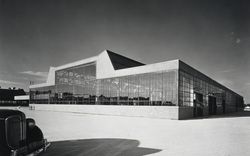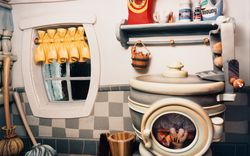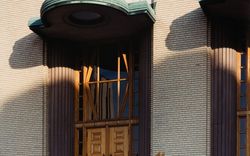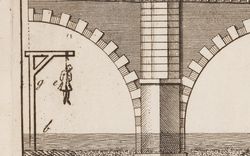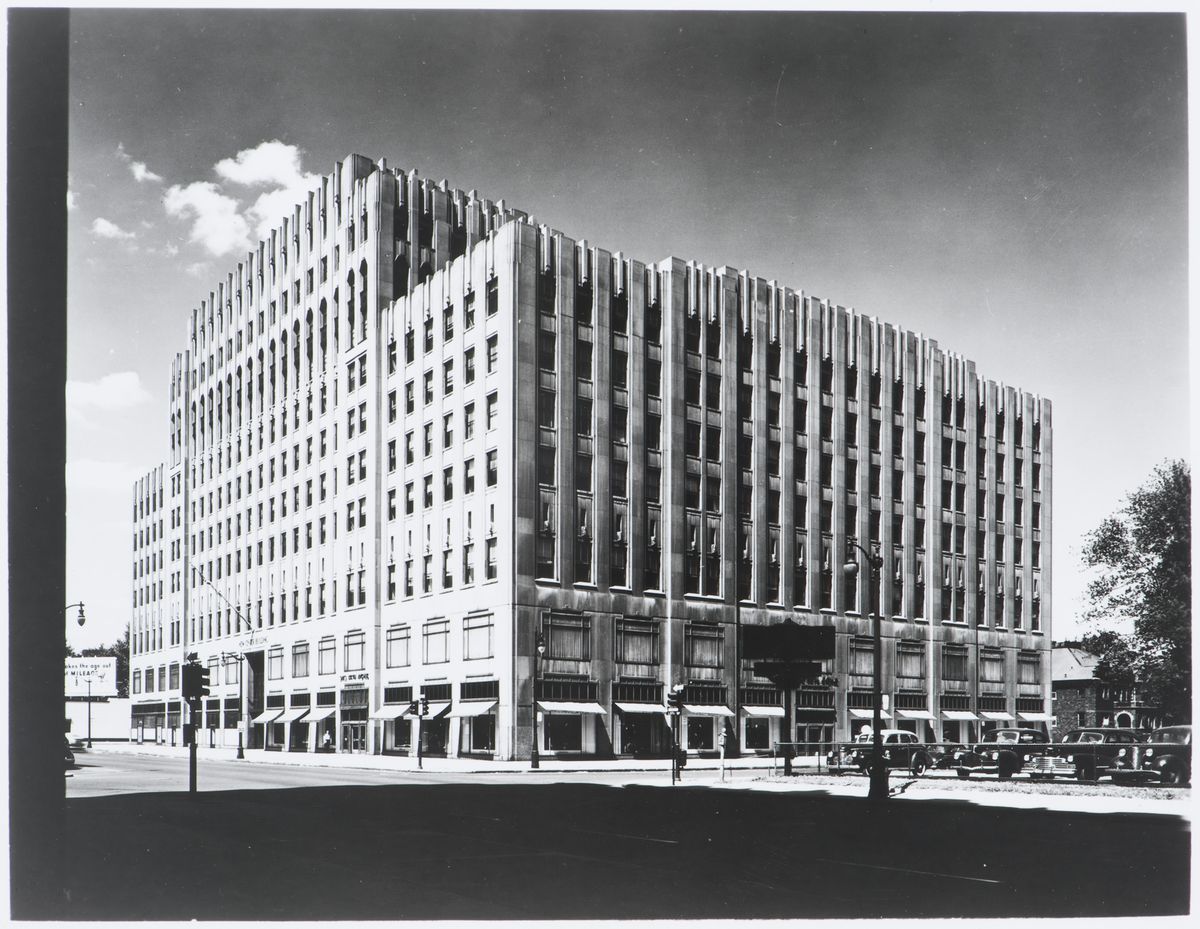Detroit: The Invisible Content of a Photograph
Text by Nancy Levinson. Photographs by Hedrich-Blessing
The true content of a photograph is invisible, for it derives from a play, not with form, but with time…. A photograph, whilst recording what has been seen, always and by its nature refers to what is not seen. It isolates, preserves and presents a moment taken from a continuum…. One learns to read photographs as one learns to read footprints or cardiograms. The language in which photography deals is the language of events. All its references are external to itself. Hence the continuum.
— John Berger, “Understanding a Photograph,” New Society, 1968
The architect Albert Kahn, who practised in Detroit from 1895 to his death in 1942 at age 73, produced more than nineteen hundred buildings, including the General Motors Futurama at the 1939 World’s Fair in New York City. For the prosperous gentry and industrialists of his city and state, his firm, which became one of the largest in the US, designed schools, libraries, headquarters, hospitals, banks and synagogues, and created neoclassical corporate offices in downtown Detroit and historicist estates in Grosse Pointe.
But today Albert Kahn’s reputation rests not on the eclectic showpiece commissions but instead on a large legacy of industrial and commercial buildings for American manufacturers, rendered usually in a stripped-down aesthetic, often deploying a novel system of concrete reinforcing devised by his brother Julius, an engineer. Actually this was true of Kahn’s reputation even in his lifetime. Kahn’s hundreds of factory projects—including facilities for Ford’s Highland Park plant on Woodward Avenue and later the massive River Rouge complex in Dearborn—attracted keen contemporary interest. After a delegation from the Soviet Union visited Michigan in the late 1920s, Kahn was commissioned to design a tractor plant in Stalingrad, which led to extensive work in the newly formed and rapidly industrializing socialist state. In the mid 1930s, George Nelson, then an editor at Architectural Forum, wrote about one of Kahn’s Chrysler plants: “Conservatives may rebel at the application of architectural criteria to such structures, but the fact remains that it is precisely in such buildings that modern architecture has reached its most complete expression.” And in 1944 the Museum of Modern Art in New York included Kahn’s Dodge Half-Ton Truck Plant, of 1938, in Built in the USA: 1932–1944. (Kahn was in good company; the exhibition featured works by Wright, Mies, Gropius, Neutra, Saarinen, Stonorov and [Louis] Kahn, Howe and Lescaze, Philip Johnson, and so on.)
The fifteen photographs in this slideshow—produced in 1920s, 1930s, and 1940s by the Chicago-based agency Hedrich-Blessing, then in the early years of its ascent—depict the two sides of Kahn’s oeuvre: the first eight show industrial projects, the next seven civic and business institutions. Today, of course, these images, skillful but not intentionally artistic, commissioned to document corporate achievement and industrial power, have taken on new meaning, new pathos. To my knowledge many of the buildings still exist, but their local-urban and socioeconomic contexts have changed in ways that would have been unimaginable back on some sunny day when a photographer from Chicago arrived in Detroit to photograph a brand-new factory or a proud new headquarters for a newspaper or a bank. In John Berger’s formulation, these photos isolate and preserve a moment in a continuum, and today we know that the moment would prove brief and the continuum unkind, and that within a generation Detroit would begin a catastrophic and startling decline unprecedented in the history of American cities.
Lately this has inspired a whole new genre of Motor City imagery, the so-called ruin porn, irresistible to amateur and professional photographers alike, though despised by locals. When you Google “Detroit” and click on the tab for “images,” the virtual gallery that appears is dominated by scenes of what the very first image calls “Detroit’s Beautiful, Horrible Decline.” Inevitably, the older images of Albert Kahn’s architecture now bear some of the burden of this subsequent history; at the least they make us newly aware that none of it had to happen. For if we see the decline of Detroit as inevitable—or if we limit our interest to the (beautiful, horrible) aesthetics of decay—then we too easily evade the difficult questions of responsibility and even complicity; questions that are especially fraught when we recall that after the 2008 financial crash, the US government underwrote the rescue of the nation’s automobile corporations but not the city in which they are headquartered. As Jerry Herron, a dean at Wayne State University and a passionate historian of his city, puts it, in one of a series of essays we published in Places Journal: “What could have happened here? Does it have anything to do with the rest of America?… We wonder how so much that is valuable, in both material and human terms, could be so quickly and violently squandered.”
Nancy Levinson was a Visiting Scholar here in 2012.









